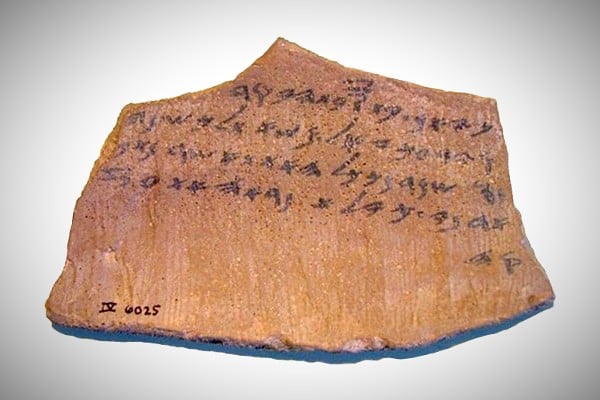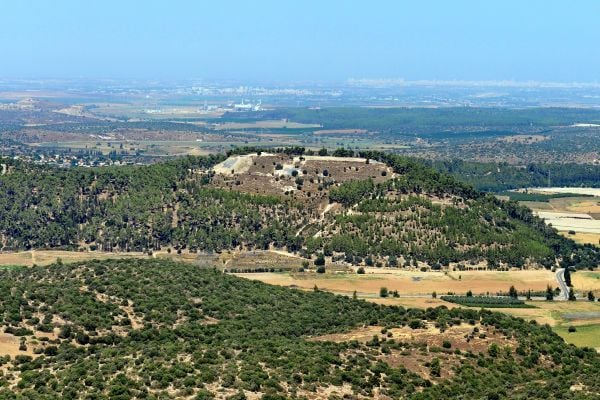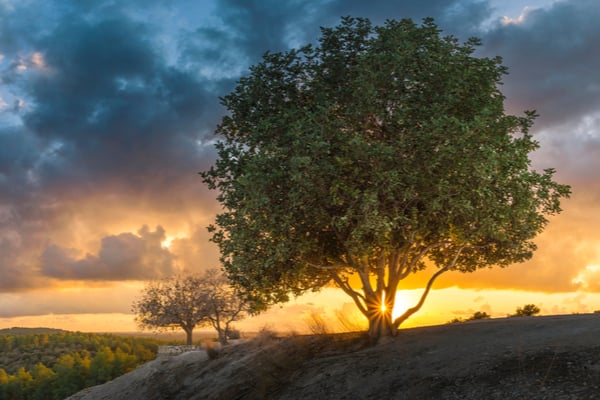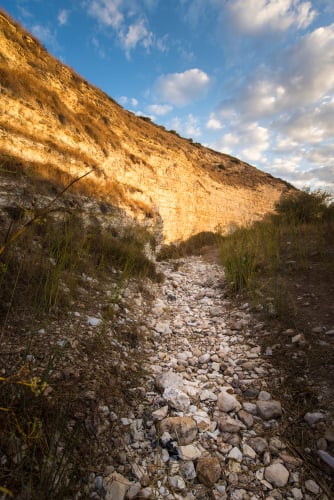David’s epic battle in Tel Azekah propelled his path to kingship.
By Nosson Shulman, Licensed Tour Guide
“The Philistines assembled their camps for war…. They encamped between Socho and Azekah…in the Terebinth Valley…The Philistines were standing…on one side and Israel was standing…On the other side and the valley was between them…A champion went forth…Goliath of Gath.” (1 Samuel 17: 1-4)
Today we are visiting an off the beaten track site, Tel Azekah, an Israelite city from Biblical times which was given by G-d to the tribe of Judah (Joshua 15: 35).
One of the advantages I have living in Israel is the ability to wake up every morning, look outside my window and see where the world’s most famous battle took place — the epic clash between David and Goliath.
After Joshua and his army defeated the city-states of Jericho and Ai, the powerful city of Gibeon made an alliance with the Israelites (see previous article on Hazor).
Five Canaanite kings attacked Gibeon, to send a message that making peace with the Jews was not in their interest. When they attacked, Joshua felt bound by his oath and came to their rescue. As the armies of the five kings saw him coming, G-d put panic into their hearts and they were smitten.
The survivors fled all the way until Azekah, where a hail storm then finished off the rest (Joshua 10). According to Jewish sources, this was left over from the plague of hail in Egypt. When Moses asked G-d to stop the plague, the remaining hail was saved for Azekah.
When the Babylonians conquered Israel centuries later, the last three cities to be conquered were the besieged cities of Jerusalem, Lachish and Azekah (Jeremiah 34: 6-7).
Indeed, excavators found a letter written by soldiers at Lachish, to be sent as a warning to fighters in Jerusalem, which said “We cannot see any more, the fire-signals of Azekah.” This “Lachish Ostraca” backs up the Biblical narrative which says these were the last three cities conquered.

Letter found at Lachish which mentions Azekah. (The Lautenschläger Azekah Expedition via Nosson Shulman)
Reliving the Famous Battle
The primary reason I take people to this site, is to relive this famous Biblical battle between David and Goliath the Philistine.
Who were the Philistines we read so much about in the Bible?
The Philistines were originally from Greece. Beginning around 1200 BCE, for the next 800 years, the Greek Peninsula went through a depression called “The Greek Dark Ages”. A certain Sea people left Greece and settled in Crete, where civilization hadn’t yet collapsed.
Due to volcanos and unrest, these sea people were once again uprooted. Approximately 220 years previously, Egypt controlled Canaan, with the city state kings being tributaries. With the collapse of Egypt’s empire, caused by the Exodus from Egypt (where Pharaoh’s army were drowned), there was suddenly a vacuum left with no one empire running the show.
The Jewish people entered from the Jordan River opposite Jericho (see yellow circle on the picture below) and took over almost the entire mountainous region. Meanwhile, the Philistines entered from the Mediterranean and took over the entire coastal area.
The Philistines had superior arms due to the fact that they were one of the leading manufacturers of deadly iron weapons. However, they were unable to conquer and hold the more mountainous region, as their chariots required flatter land (Judges 1:19).
The Philistines oddly entered into Judean territory to wage war with confidence, even though they had just suffered a crushing defeat at the hands of King Saul (1 Samuel: 14). Equally strange, Saul and his men were too frightened to fight.
According to one Jewish source, G-d made it this way in order to bring David into the picture, putting him in a position to succeed the throne. G-d had just told Saul the kingship would be taken from him. (1 Samuel 16)
The Philistines gathered their forces at Socho while the Jews mobilized at Azekah.
Terebinth Valley, which gets its name from the trees growing there in abundance, was between the two camps.
Each morning for forty days, the mighty Goliath (just under 13 feet tall and covered from head to toe with heavy armor) approached the Israelite camp and said “Choose for yourself a man and let him come down to me. If he can fight me and kill me, we will be slaves to you. And If I defeat him…You will be slaves to us (1 Samuel 17: 8-9).”
As a side note, one can clearly see the Greek origins of the Philistines. Nowhere in history, outside of ancient Greece, were wars fought between two heroes with “winner take all” stipulations effecting the entire nation.
While this was happening, Jesse asked his son David, who was shepherding his sheep in Bethlehem, to check on three of his older brothers on the battle field and bring them provisions (In ancient armies, it wasn’t uncommon for soldiers to supply their own weapons, clothes, food, etc.).
When David arrived, he saw a frightened army. The situation was so dire, that Saul promised anyone who could slay Goliath his daughter’s hand in marriage (which meant wealth and a royal court position).
When David heard Goliath disgracing “The battalions of The Living G-d”, he was disgusted and wanted to take down the Giant himself. He began inquiring as to what the reward from the King would be for slaying the giant. He already knew the answer, but wanted to engage people in discussion, hoping that word would travel back to the King that David wanted to fight.
David put a single stone into his slingshot, aimed it at Goliath and hit him, causing him to collapse. David then cut off the giant’s head and the Philistines fled, thus removing their threat to Israel for a long time.
David went on to marry Saul’s daughter Michal.
With David in the royal court, God had set the stage for his rise to kingship.
I highly recommend visiting Azekah and the Terebinth valley on your next trip. In addition to being historic and biblical, it offers some of Israel’s best panoramic views and wildflowers.
You can even stop at the brook and take home one of the stones!
Nosson Shulman is a journalist and Licensed Tour Guide in Israel specializing in Biblical tours. To allow tourists to experience Israel during the Corona era, he created the new hit Israel tour video series, which brings Israel to the home of viewers by simulating actual tours. To check out his free sneak preview tour videos, click here. To view sample tour itineraries or to inquire about private tour opportunities with a personalized itinerary on your next trip to Israel, click here.


